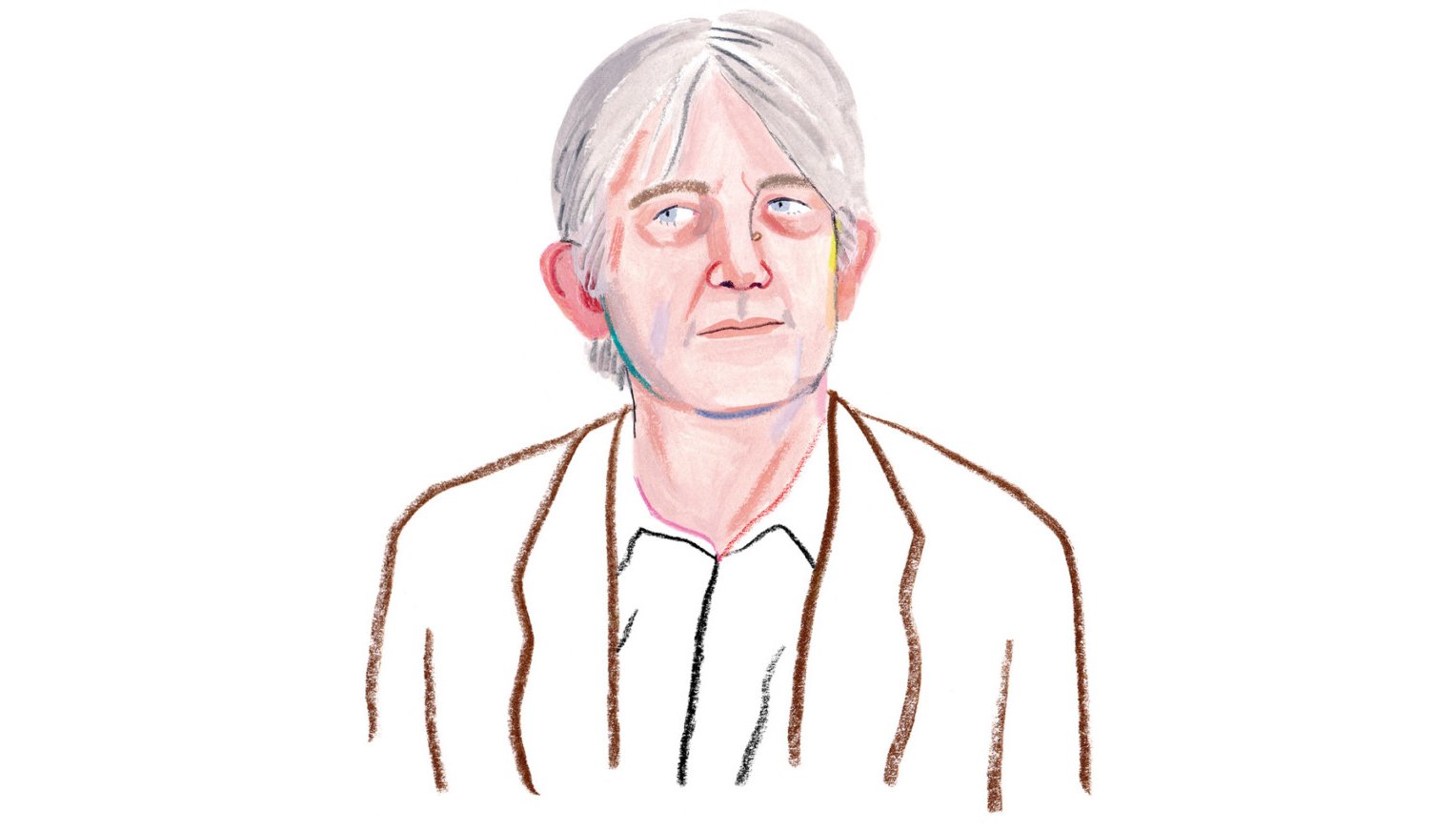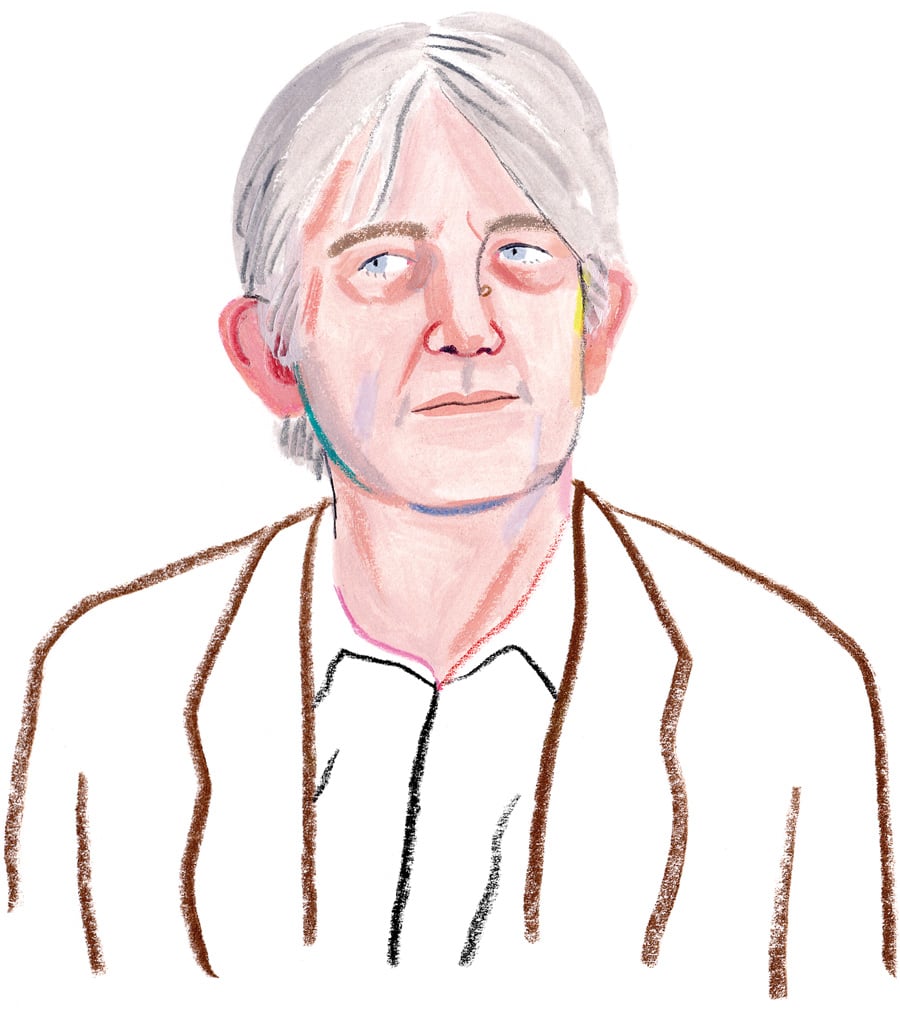
June 11, 2018
Three Design Influencers Weigh in on the Future of Work
What will the office look like in the near future? Three venerable names in design offer their speculations.
It’s self-evident that the workplace is changing, but we might ask how dramatic these changes actually are. Looking for an answer to this question, Metropolis solicited the expert opinions from the following design leaders, in addition to practicing architects and designers.
Deyan Sudjic: Office Feels

All illustrations by Rebecca Clarke
The most powerful companies on the planet are all building themselves massive new headquarters buildings. But building an office complex in which 11,000 people will work is more like city-building than conventional workplace design.
There is some formal similarity here to the company towns industrialists such as Henry Ford built. Ford had a company orchestra and marching band and holiday settlements. Yet, those towns sustained family-based communities comprising different age groups. The fact that Silicon Valley’s average age for employees is less than 30 suggests a very different kind of approach to the workforce.
If one looks at almost every field, from the automotive industry to furniture manufacturing, it seems that the middle is falling out of the picture. In the automotive world, there will soon be, on the one end, autonomous vehicles with which nobody has any emotional relationship, and at the other end, you’ll have Ferrari. In a similar way, the office is becoming either extraordinarily tailored and made into a kind of resonant, special place or very generic. There won’t be much in the middle.
It’s worth bearing in mind that human beings are not always rational and calculating. Rather, we are programmed to look for change for reasons that are not always utilitarian in nature. There’s no rational reason to build high-rise offices except as a means to signal corporate ego or presence, and yet they are now being built again, in places where they previously weren’t. So one can see, the presence of reaction and counteraction. People look for formality in some generations and then react against it. I think one can see that process at work in even what is apparently a coldly calculating area as the workplace. We need to remember— there is room for emotion in there as well.
Deyan Sudjic is a writer and director of the Design Museum in London.
Patricia Urquiola: A Natural Change

We often think of a place when we think about the office. But today our offices are becoming less like traditional places and more like hubs—smart hubs—each one connected to others all over the world, at all hours of the day. Here, the divide between “internal” and “external” members of a company is blurred, as the idea of collaboration is fully integrated into the organization of the space. The office will be a fluid thing. It will be almost natural.
As an architect, it is interesting to think about what these hubs might look like. What we should be thinking about is the data generated by these hubs and how it might be used to increase our sense of wellness and enjoyment. How will we rethink architecture in response to this proliferation of sensors? What is the “architecture of sensors”?
We will need to invent new materials, but in the meantime, we can augment old ones—glass, for example, might be the most dynamic material for a wall because you can already embed different properties within its membrane. We will also have to design new forms of lighting, as well as new tolerances of temperature, noise, and smell. All the parameters of the office will need to be reconsidered, and data is key to doing this.
Already, we live among sensors. We work every day in multiple directions, across many platforms. We all have our own personal preferences for our ideal workspace, but in the future, we will carry these “habitats” with us everywhere we go, to hubs both online and physical. Data will allow us to easily change our environments.
This is what I mean by natural—that this adaptation will become almost intuitive. That is the promise of technology, and hopefully it will aid us in becoming more human rather than cyborgs.
Patricia Urquiola is the principal of Studio Urquiola.
Giulio Cappellini: On Beauty

Beauty is one of the most important aspects of design. It’s also an underrated aspect of the workplace. When people are spending 10 or 12 hours a day at the office, a pleasant atmosphere is essential.
Attitudes are changing, and people are realizing that the workplace should feel more like a home. More and more offices are embracing a warm look and feel, natural materials, and bright colors. Personalization, through small collections of objects on desks or shelves, is welcomed. Lighting, too, has softened and is more atmospheric. What managers have realized is that in a nice environment, people simply work better.
Flexibility is key to this new mind-set, and it is fast changing our idea of collaboration, of working in a team. Our office concepts will need to shift to accommodate these new models of work. Already, many offices are moving away from formal typologies, such as conference rooms or even desks. In this new environment, a workspace might not even include a desk at all—it might, for instance, take the form of a small table where three or four coworkers can meet. Executives will have lounges equipped with software and gadgets, as there will no longer be the need to congregate around enormous conference tables. When you have the technology—a touchscreen, the cloud—and the know-how, you can just as easily call in and present from an armchair.
Miniaturization of technology is helping designers create products for these new spaces that aren’t just useful, but also discreet. Our devices now allow us to work remotely, to get up and move stations during the day, or to turn a small café into a casual presentation space. And they are stylish. Fortunately for all of us, form has evolved and will continue to do so.
An effective workplace demands balance. People need beauty. Without it, we can’t live.
Giulio Cappellini is the art director of the design company Cappellini.
Recent Viewpoints
Viewpoints
Sustainability News Updates for Q2 2025





